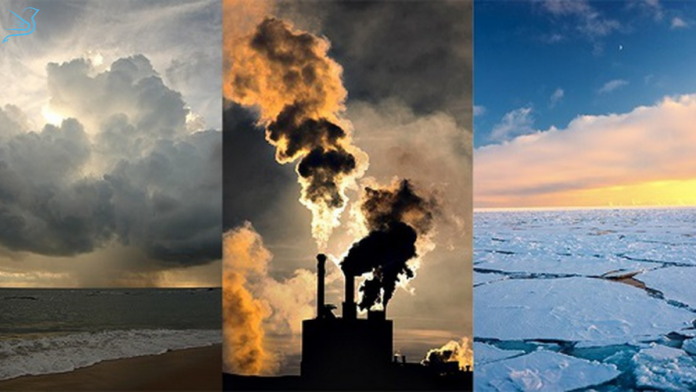Recently, a report titled “Mapping India’s Climate Vulnerability – A District-level Assessment” has been released.
Environmental think tank Council on Energy, Environment and Water(CCWE) has carried out a first-of-its-kind district-level climate vulnerability assessment, or Climate Vulnerability Index (CVI), in which it has analysed 640 districts in India. The analysis was done to assess their vulnerability to extreme weather events such as cyclones, floods, heatwaves, droughts, etc.
Read our blog to know all about the report and its findings and recommendations suggested .
How is the Climate Vulnerability Index assessed?
The CVI depicts exposure (whether the district is vulnerable to extreme weather), sensitivity (the chance of a weather event having an impact on the district), and adaptive capability (what the response or coping mechanism of the district is).
It aids in the mapping of major vulnerabilities as well as the development of policies to improve resilience and adapt through climate-proofing communities, economies, and infrastructure. Instead of focusing on individual climatic extremes, the study considers the cumulative risk of hydro-met catastrophes, such as floods, cyclones, and droughts, as well as their consequences. Other natural disasters, such as earthquakes, are not considered in the study.
Key Findings of the Climate Vulnerability Index
Affected States
27 Indian states and union territories are vulnerable to extreme climate events and 463 districts out of 640 are vulnerable to extreme weather events
Most Vulnerable States
The Council on Energy, Environment, and Water (CCWE), an environmental think tank, has conducted a first-of-its-kind district-level climate risk assessment, or Climate Vulnerability Index (CVI), in which it examined 640 districts in India.
The study was carried out to determine their vulnerability to extreme weather events such as cyclones, floods, heat waves, droughts, and other natural disasters.
Magnitude of Impact of Climate Change
More than 80 percent of Indians live in districts vulnerable to climate risks, that is, 17 of 20 people in the country are vulnerable to climate risks, out of which every five Indians live in areas that are extremely vulnerable.
More than 45 per cent of these districts have undergone “unsustainable landscape and infrastructure changes’’.
Low Adaptive Capacity
60% of Indian districts have medium to low adaptive capacity in handling extreme weather events – these districts don’t have robust plans in place to mitigate impact.
Anthropogenic Activity
The anthropogenic activity has already made vulnerable districts become even more vulnerable to impacts of natural disasters. Some of the activities has led to:
- Loss of wetlands and loss in mangroves which would act as a natural barrier, making it more vulnerable.
- Landscape disruptions such as the disappearance of forest cover, over-construction, have led to degradation of natural ecosystems.
Triggering Financial Crisis
Combating the rising frequency and scale of extreme climate events is fiscally draining for developing countries such as India.
Investments in infrastructure such as housing, transport, and industries will be threatened by these events, especially along the coasts, adding that mounting weather-related insurance losses could trigger the next financial crisis.
Other Highlights
- The study also found that states in India’s northeast are more prone to floods, while the ones in the south and central are most vulnerable to extreme droughts.
- Further, 59 and 41 per cent of the total districts in the eastern and western states, respectively, are highly vulnerable to extreme cyclones.
- As per the index 183 hotspot districts are highly vulnerable to more than one extreme climate event.
- Most districts in India have been made particularly vulnerable due to “landscape disruptions’ such as the disappearance of forest cover, over-construction, degradation of wetlands and other natural ecosystems.
Best Performing States and Why
The CVI has ranked 20 states out of which Assam and Andhra Pradesh are the most vulnerable to extreme weather events, and Kerala, Tripura and West Bengal are the least vulnerable.
Kerala and West Bengal have performed well despite both being coastal states and dealing with the threat of cyclones and floods annually. The reason why these states have fared better is they have stepped up their climate action plans as well as preparedness to handle an extreme weather event.
Recommendations
- Develop a high-resolution Climate Risk Atlas (CRA) to map critical vulnerabilities at the district level and better identify, assess, and project chronic and acute risks such as extreme climate events, heat and water stress, crop loss, vector-borne diseases and biodiversity collapse.
- A CRA can also help with coastal monitoring and forecasting, which is critical given the rapid development of cyclones and other extreme weather phenomena.
- Establish a centralised climate-risk commission to coordinate the environmental de-risking mission.
- Undertake climate-sensitivity-led landscape restoration focused on rehabilitating, restoring, and reintegrating natural ecosystems as part of the developmental process.
- Integrate climate risk profiling with infrastructure planning to increase adaptive capacity.
- Provide for climate risk-interlinked adaptation financing by creating innovative CVI-based financing instruments that integrate climate risks for an effective risk transfer mechanism.
About Council on Energy, Environment and Water (CEEW)
CEEW is one of Asia’s leading non-profit policy research institutions.
The Council was founded in 2010 to also serve as a platform for people with different skills to come together, pursue their interests and build careers in public policy.
It uses data, integrated analysis, and strategic outreach to explain and change the use, reuse, and misuse of resources.
With this we come to the end of this blog. We discussed all the important points made in the report as well as the recommendations that India must follow to improve its condition.
Stay tuned for more updates.




